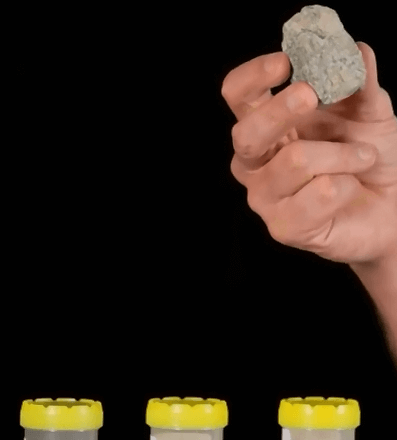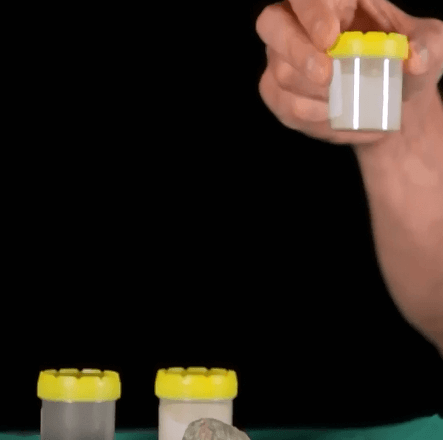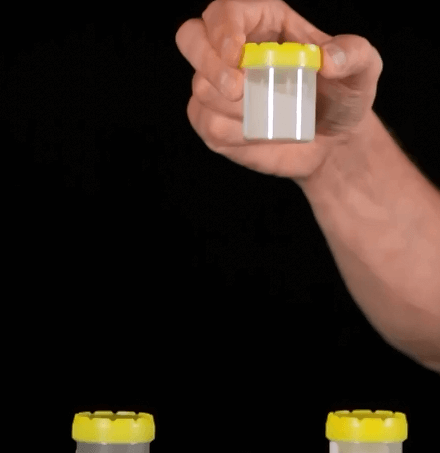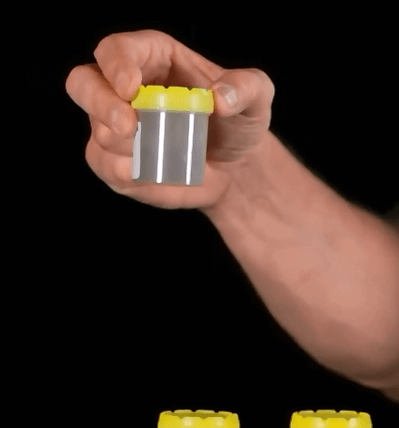Flotation utilizes the fact that the metalliferous ore particles, and the gangue minerals have different interactions with water. Fundamentally floatation relies on the fact that hydrophobic ore particles and hydrophilic gangue particles can be separated. Hydrophobic means water fearing and hydrophobic substances fundamentally repel water. Hydrophilic means water loving and layers are attracted to water. In floatation, we create bubbles as a froth that sits on the top of a suspension of crushed ore. The hydrophobic ore particles which don’t want to stay in the suspension, preferentially petition to the surface of the bubbles. While the gangue minerals which are happy to stay in the suspension stay in the water below the froth and sink to the bottom. If the froth is continually replenished, then the ore particles float to the surface in the froth which can be skimmed off and the ore particles recovered. To enhance the formation of the froth we had chemicals called frothers, which are surfactants like detergents which help to create small bubbles and stable froth layer at the surface. There are our basic types of floatation cells: Mechanical; column; Jameson and reflux floatation cells. And there are many variations on these basic themes we’ll have a look at the simplest of these the mechanical floatation cell.
Mechanical floatation cells consist of a sturdy tank air is sucked in via a simple motor shaft and the spinning in power extra break the gas into fine bubbles as well as to get the solid particle suspended. The bubbles will rise to the surface forming a froth layer, hopefully carrying the hydrophobic ore particles with them. This froth overflows and is collected as the concentrate. Water results are withdrawn from the base of the cell to remove the uncollected solids in a tailing stream. We can wash the entrain gangue mineral from the froth layer via the wash water.
Coal is somewhat naturally hydrophobic, and so it can be readily floated. However, most mineral ores are naturally hydrophilic. What makes floatation such a powerful tool for mineral processing is that we have learnt how to selectively modify the surface properly through different ore minerals to make them hydrophobic. We use various types of chemicals, remembering that we have already spoken about frothier. But they’re also collectors, activators, and depressants to control the particle surface properties.
A collector makes the surface of a particle hydrophobic. An activator makes the particle surface more responsive to the collector. A depressant makes the surface of unwanted particles less responsive to the collector, we can also add acids or bases as pH modifiers to control the responses of minerals to the collector. Flotation has the capacity to recover at different mineral species at different stages in the process.  In this way we can beneficiate complex mixtures of ores, to produce a range of different mineral products. To illustrate the power of the flotation process, consider this sample of low grade copper rock. If this copper is crushed to produce a clean stream for flotation process, we end up with the powder that looks like this. After flotation, we produce a stream of tailings that looks like this and a stream of recovered ore that looks like this.
In this way we can beneficiate complex mixtures of ores, to produce a range of different mineral products. To illustrate the power of the flotation process, consider this sample of low grade copper rock. If this copper is crushed to produce a clean stream for flotation process, we end up with the powder that looks like this. After flotation, we produce a stream of tailings that looks like this and a stream of recovered ore that looks like this.
 Flotation is a powerful tool to recover small amounts of valuable minerals from low grade ores. So having generated your product the next task is to get it to the customer, we’ll take a look at how this is done in the next topic.
Flotation is a powerful tool to recover small amounts of valuable minerals from low grade ores. So having generated your product the next task is to get it to the customer, we’ll take a look at how this is done in the next topic.
Images for illustration purposes only. No rights can be delivered from the illustrations.
911METALLURGY CORP. can not be responsible for errors in typography or photography.
Copyright 2012-2024 911Metallurgist | All Rights Reserved